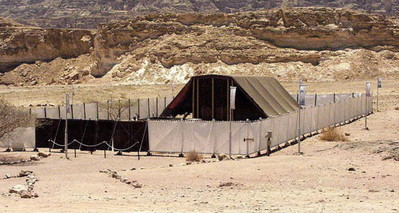Recently my family’s devotions have involved reading through the book of Hebrews. The writer of Hebrews spends a lot of time talking about the design of the Mosaic tabernacle, the function of the high priest, the offering of animal sacrifices, and other cultic practices dating from the second millennium BC:
Now the first covenant also had regulations for ministry and an earthly sanctuary. For a tabernacle was set up, and in the first room, which is called the holy place, were the lampstand, the table, and the presentation loaves. Behind the second curtain, the tabernacle was called the most holy place. It contained the gold altar of incense and the ark of the covenant, covered with gold on all sides, in which there was a gold jar containing the manna, Aaron’s staff that budded, and the tablets of the covenant. The cherubim of glory were above it overshadowing the mercy seat. It is not possible to speak about these things in detail right now. (9:1–5 HCSB)
How do you make sense of such descriptions to children living in the third millennium AD? With Accordance and the Bible Lands PhotoGuide, I simply selected the word “tabernacle” in the passage just quoted and chose the PhotoGuide from the English Tools pop-up of the Resource palette. Immediately I was taken to an article describing the tabernacle and featuring photos of a life-size reconstruction. In a few minutes, I was able to show my kids exactly what the writer of Hebrews is talking about and how it relates to the point he is making.
If you don’t yet have the Bible Lands PhotoGuide, you’ve got a few more days to take advantage of our overlapping sales.


